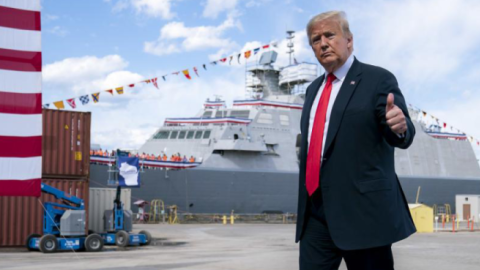p(firstLetter). Since the end of the Cold War, most U.S. policymakers have been beguiled by a set of illusions about the world order. On critical issues, they have seen the world as they wish it were and not how it really is. President Donald Trump, who is not a product of the American foreign policy community, does not labor under these illusions. Trump has been a disrupter, and his policies, informed by his heterodox perspective, have set in motion a series of long-overdue corrections. Many of these necessary adjustments have been misrepresented or misunderstood in today’s vitriolic, partisan debates. But the changes Trump has initiated will help ensure that the international order remains favorable to U.S. inter-ests and values and to those of other free and open societies.
As the administration’s first term draws to a close, Washington should take stock of the crumbling post–Cold War order and chart a path toward a more equitable and secure future. No matter who is U.S. president come January, American policymakers will need to adopt new ideas about the country’s role in the world and new thinking about rivals such as China and Russia—states that have long manipu-lated the rules of the liberal interna-tional order to their own benefit.
A new set of assumptions should underpin U.S. foreign policy. Contrary to the optimistic predictions made in the wake of the Soviet Union’s collapse, widespread political liberalization and the growth of transnational organiza-tions have not tempered rivalries among countries. Likewise, globalization and economic interdependence have not been unalloyed goods; often, they have generated unanticipated inequalities and vulnerabilities. And although the proliferation of digital technologies has increased productivity and brought other benefits, it has also eroded the U.S. military’s advantages and posed challenges to democratic societies.
Given these new realities, Washington cannot simply return to the comfortable assumptions of the past. The world has moved beyond the “unipolar moment” of the post–Cold War period and into an age of interdependence and competition that calls for different policies and tools. To properly navigate this new era, Washington must let go of old illusions, move past the myths of liberal interna-tionalism, and reconsider its views about the nature of the world order.
ALL TOGETHER NOW?
As the twentieth century drew to a close, the increasing number of countries that were embracing democratic ideals inspired pride in the West and high hopes for the future. A consensus formed that a convergence on liberal democracy would lead to a stable international political order. As the Soviet Union withered and the Cold War ended, U.S. President George H. W. Bush called for a “new world order,” a “Pax Universa-lis” founded on liberal values, democratic governance, and free markets. Several years later, President Bill Clinton’s 1996 National Security Strategy articulated a policy of engagement and democratic enlargement that would improve “the prospects for political stability, peaceful conflict resolution, and greater dignity and hope for the people of the world.”
...
















